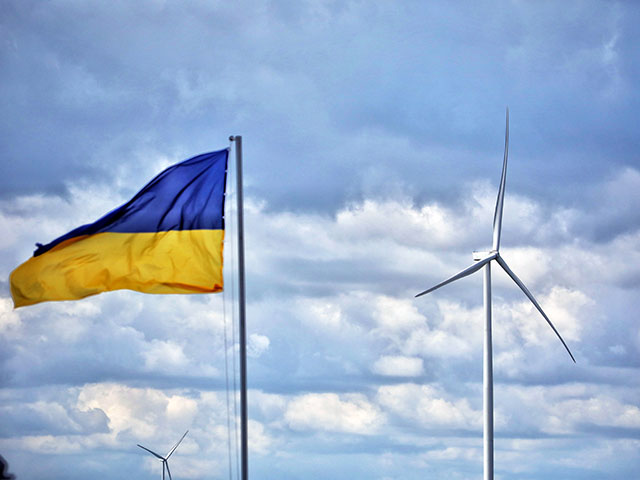The International Energy Agency (IEA) on Thursday produced a report that found “clean energy” investments have skyrocketed during Russia’s invasion of Ukraine, driven by anxiety over volatile fossil fuel prices and the cutoff of oil and gas supplies from Russia.
According to the report, clean energy investment will hit $1.7 trillion this year, while fossil fuel investment will top out at just over $1 trillion.
“In very simple, but very striking terms, five years ago global energy investment was $2 trillion, of which $1 trillion was for clean energy and $1 trillion was for fossil fuels. Today, $1 trillion is for fossil fuels and $1.7 trillion is for clean energy,” IEA executive director Fatih Birol told the UK Guardian.
“For the first time in history, the amount of investment going to solar is higher than the amount going to oil production. It may be symbolic, but it is very important because it shows the tide turning,” Birol said.
“This is a dramatic shift which will have consequences for the energy markets and climate change. In my view, it’s very exciting,” said Birol, a perhaps unfortunate choice of words given the titanic scale of human suffering in the Ukraine conflict.
The Guardian inadvertently took a little of the “excitement” away by noting fossil fuel demand and prices cratered during the Wuhan coronavirus pandemic. Some investments in oil and gas are therefore increasing more by volume than the dollar figure comparison cited by the IEA would suggest, but since fossil fuels became cheaper, the dollar value of the investments is lower.
“At the same time global coal demand reached an all-time high in 2022, in part owing to record high gas prices, which has spurred estimated coal investment for this year to nearly six times the levels that are aligned with global 2030 climate targets,” the Guardian dutifully pointed out.
Smoking chimneys and solar panel farm are seen along a highway in a coal producing region in Yulin in northwestern China’s Shaanxi province, April 24, 2023. (AP Photo/Ng Han Guan)
The IEA report’s expansive total for projected “clean energy” investment in 2023 includes “renewables, electric vehicles, nuclear power, grids, storage, low-emissions fuels, efficiency improvements and heat pumps,” which would seem to skew the analysis against the narrower definition of “coal, gas, and oil” investment, especially since many green energy activists would strenuously object to including nuclear power as “clean.”
“More than 90% of this increase comes from advanced economies and China, presenting a serious risk of new dividing lines in global energy if clean energy transitions don’t pick up elsewhere,” the IEA warned.
This is more than a trifling concern, because developing economies have a tough time affording expensive green energy solutions that do not provide enough affordable and consistent power for their growing industrial needs.
The IEA itself has previously noted that carbon dioxide emissions from developing economies are growing rapidly, and such nations represent only a small fraction of total global spending on green energy.
Ukrainian soldiers fire a cannon near Bakhmut, an eastern city where fierce battles against Russian forces have been taking place, in the Donetsk region, Ukraine, May 15, 2023. (AP Photo/Libkos)
After its opening paragraphs congratulated the entire world for spending more on clean power solutions, the IEA’s 2023 report conceded developing nations are still falling far short of its aspirations:
The biggest shortfalls in clean energy investment are in emerging and developing economies. There are some bright spots, such as dynamic investments in solar in India and in renewables in Brazil and parts of the Middle East. However, investment in many countries is being held back by factors including higher interest rates, unclear policy frameworks and market designs, weak grid infrastructure, financially strained utilities, and a high cost of capital. Much more needs to be done by the international community, especially to drive investment in lower-income economies, where the private sector has been reluctant to venture.
An oil tanker is moored at the Sheskharis complex, part of Chernomortransneft JSC, a subsidiary of Transneft PJSC, in Novorossiysk, Russia, October 11, 2022, one of the largest facilities for oil and petroleum products in southern Russia. (AP Photo)
For that matter, the considerably less upbeat closing paragraphs of the IEA report said the developing world still isn’t spending nearly enough to meet the sweeping goals the organization has set for 2030 and 2050, and the much-touted advantage in spending for clean energy appears to be temporary:
Nonetheless, the expected rebound in fossil fuel investment means it is set to rise in 2023 to more than double the levels needed in 2030 in the IEA’s Net Zero Emissions by 2050 Scenario. Global coal demand reached an all-time high in 2022, and coal investment this year is on course to reach nearly six times the levels envisaged in 2030 in the Net Zero Scenario.
The oil and gas industry’s capital spending on low-emissions alternatives such as clean electricity, clean fuels and carbon capture technologies was less than 5% of its upstream spending in 2022. That level was little changed from last year – though the share is higher for some of the larger European companies.
Bloomberg Law reported in April that a great deal of the “explosion” in clean energy spending in the United States over the past eight months was driven not by sustainable market demand, but by a “wave of federal incentives” – and that money came from a government that is currently teetering on the brink of an apocalyptic debt crisis.
